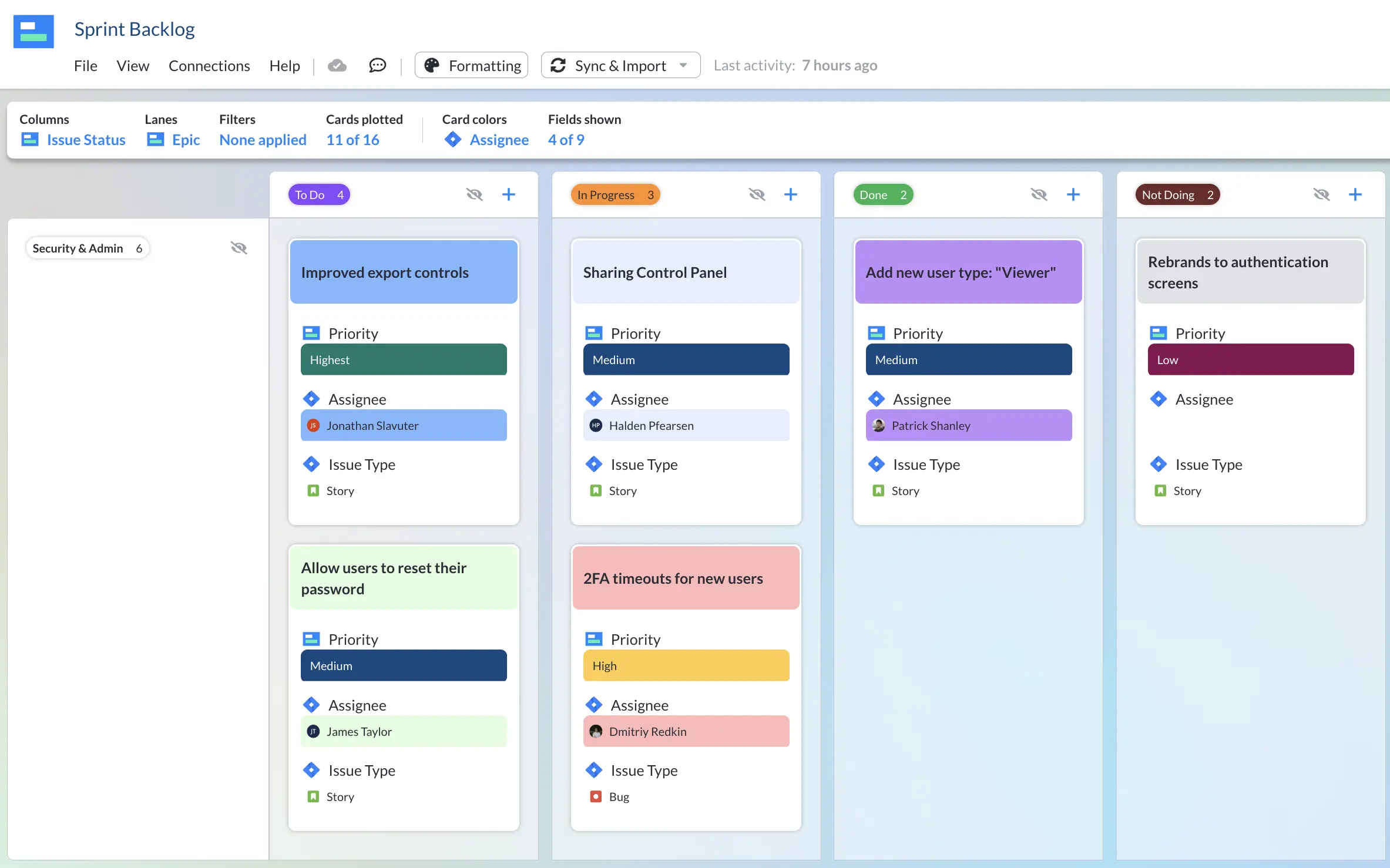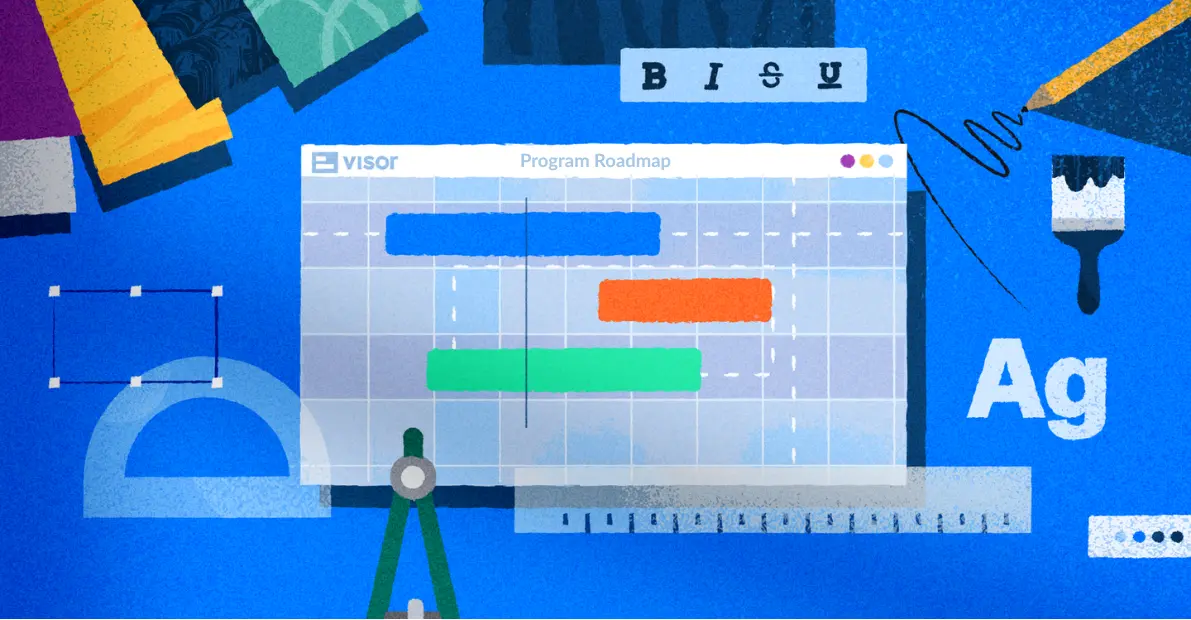
How PMs can Facilitate Effective Sprint Goal Setting
Sprint goal setting is essential but often overlooked. The first question I want to ask you is how did goals go for your last sprint? Were they too easy, too hard, or just right?
If you use agile methodologies, you’re already deeply familiar with sprints: the two week spans of time that many agile teams use to divide up their work. These blocks of time are the foundation of all other agile elements.
But setting goals for them that fill the time but don’t spill over, that are challenging enough to be true goals but not so challenging as to demoralize your team, that are specific enough to matter but general enough that stakeholders understand them… now there’s a problem that even experienced agile users struggle with.
This article is here to help you set better goals and actually meet them. This is a look into how to understand yourself, your team, and your business enough to set goals in the most effective way possible.
How would we know? We’re Visor, a project management tool that helps you see the big picture. We work great with agile teams, giving PMs the visibility they need to help everyone stay right on track. Best of all, we’re free to use. Try it out today.
Are you setting the right sprint goals?
The problem with setting goals for sprints is that, all too often, they seem like they don’t matter at all.
SMART is tried and true for a reason. If your goals aren’t both specific and achievable, you’re not going to make progress towards them. If your goals can’t be measured effectively, you can’t prove you achieved them.
It also matters if the goals you’re setting are in line with the context around you. Are your goals in line with the team’s? The project’s? The company’s?
Setting the right goals is the first step in setting goals that are at once meaningful and possible.
Example of Visor’s Sprint Planning Template using Jira Data:
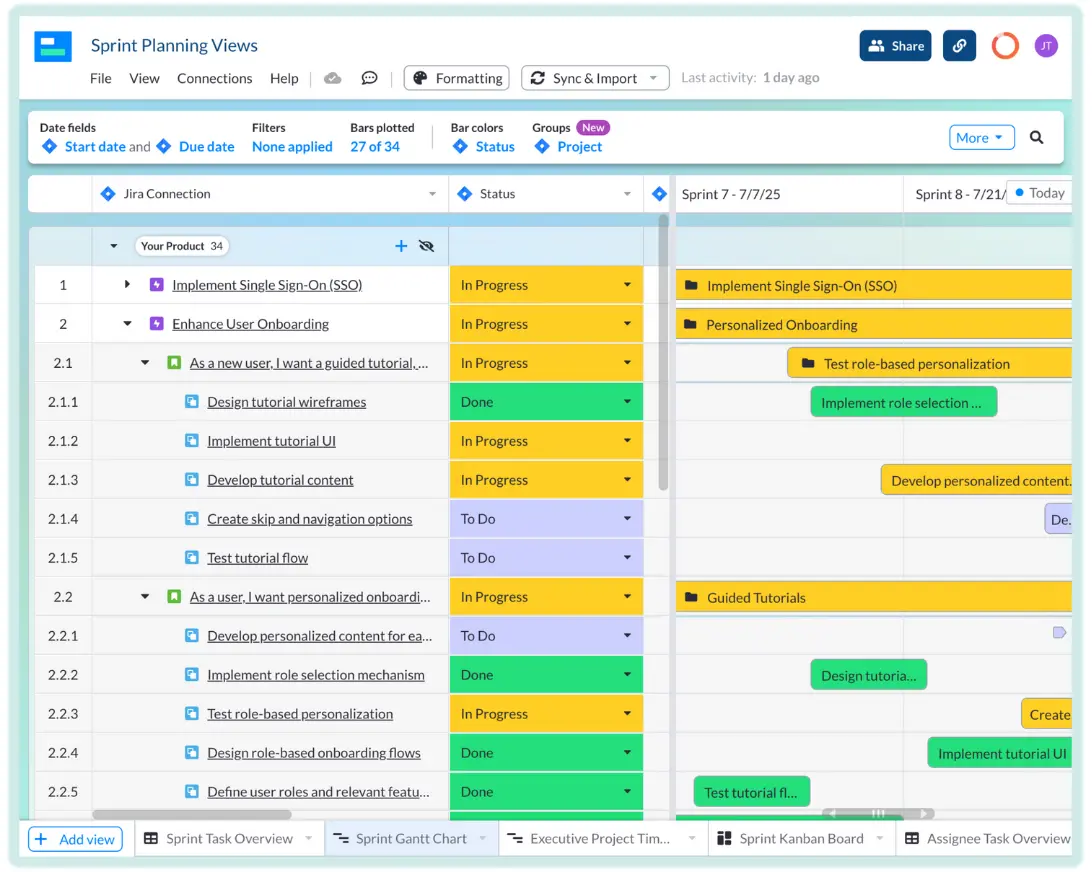
How can you make your sprint goals happen?
Now here’s the part other guides won’t tell you: how can you actually achieve these goals? As a PM, there’s three key things in your power.
Create accountability
The biggest reason that people fall short of sprint goals is that they, in some way, don’t feel “real.” That might mean that the goals are weak, that there’s no follow up after a goal isn’t met, or (worst of all) there’s no follow up after a goal is met.
As a PM, you have possibly the most control of all over this element of successful sprint goal setting. You have the unique ability to hold your team accountable for their goals. Not only do you want to be involved in setting the goals, you need to be involved in their execution and the results.
Unfortunately, “accountability” often sounds like a bad word. It implies something is bad, or that someone needs to be punished. That truly isn’t the case. While, yes, it’s important for PMs to follow up on missed goals (uncovering what went wrong and how you can avoid that problem the next time) it’s just as important to follow up on the wins and successes.
This starts with congratulations:
- “Hey, great work on beating the deadline!”
- “This was a huge task and you made it look easy!”
But it extends into analysis:
- “How were you able to work so fast?”
- “Is there a method you use that you could teach the rest of the team?”
This is the secret of truly great PMs.
Accountability requires visibility. If you can’t get a good idea of what you and your team are working on, you won’t be able to hold anyone accountable, least of all yourself.
Great project management tools are key for producing great work. You need to have a single place where you can see what your team is working on, where they spend their time, and where they’re blocked. A tool with a dashboard view, like Visor, is a perfect fit for this need.
Visor’s Sprint Monitoring Dashboards
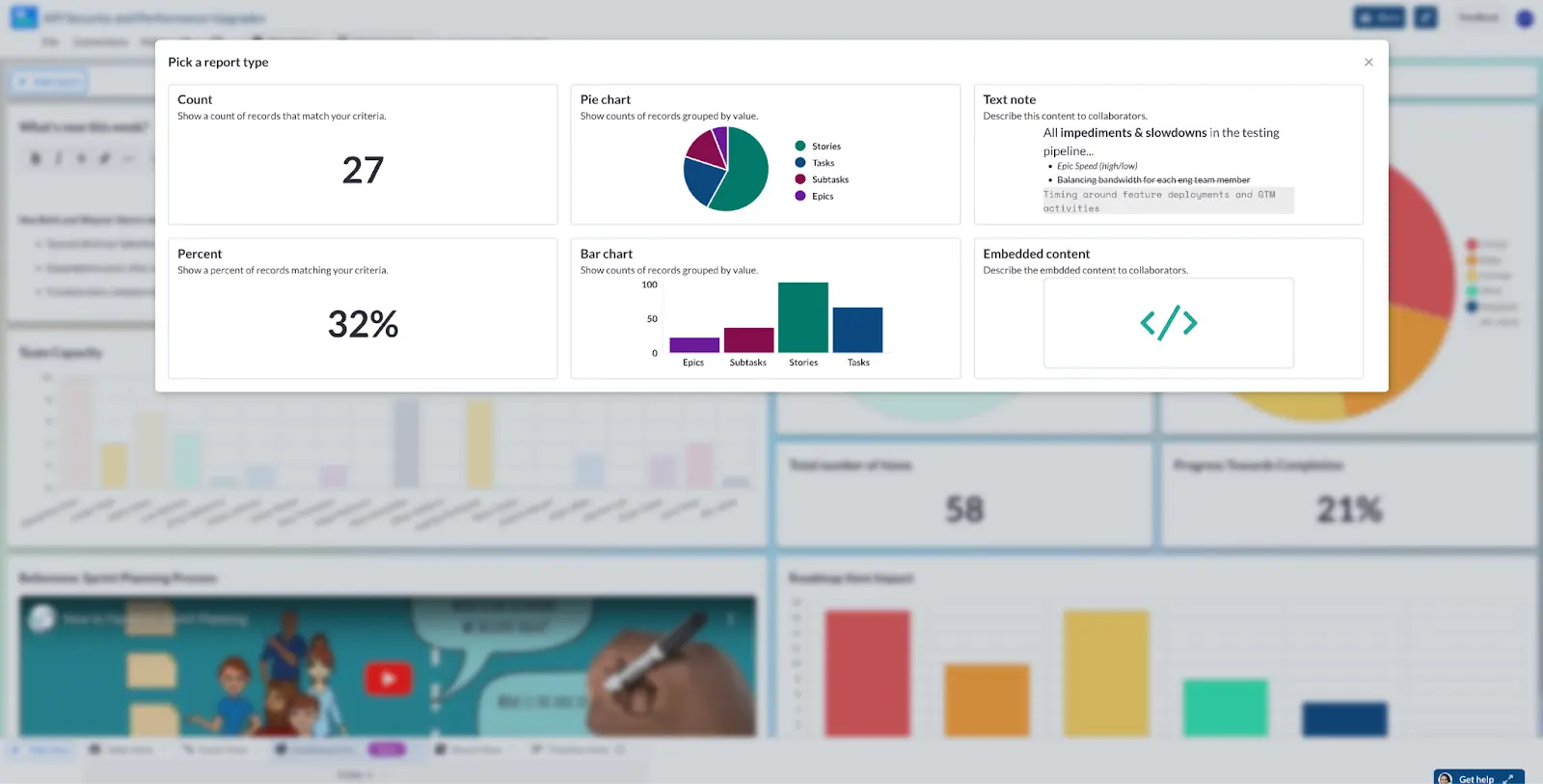
Don’t move the goalposts
Once your team has set their goals, stick to them. Shuffling tasks around is the first step to scope creep and lost time you’ll struggle to get back.
And, just like with accountability, moving the goalposts can be demoralizing when it has to do with successes. Try to never brush off a win by acting like it was easy or changing the new goal to be something “harder” or that will take longer to do. Instead, acknowledge the success and work the knowledge of how challenging it was into the next sprint.
You can help keep goals in mind and on track for your team by using a timeline as a single source of truth for due dates, difficulty level, and more.
Visor’s Timeline View
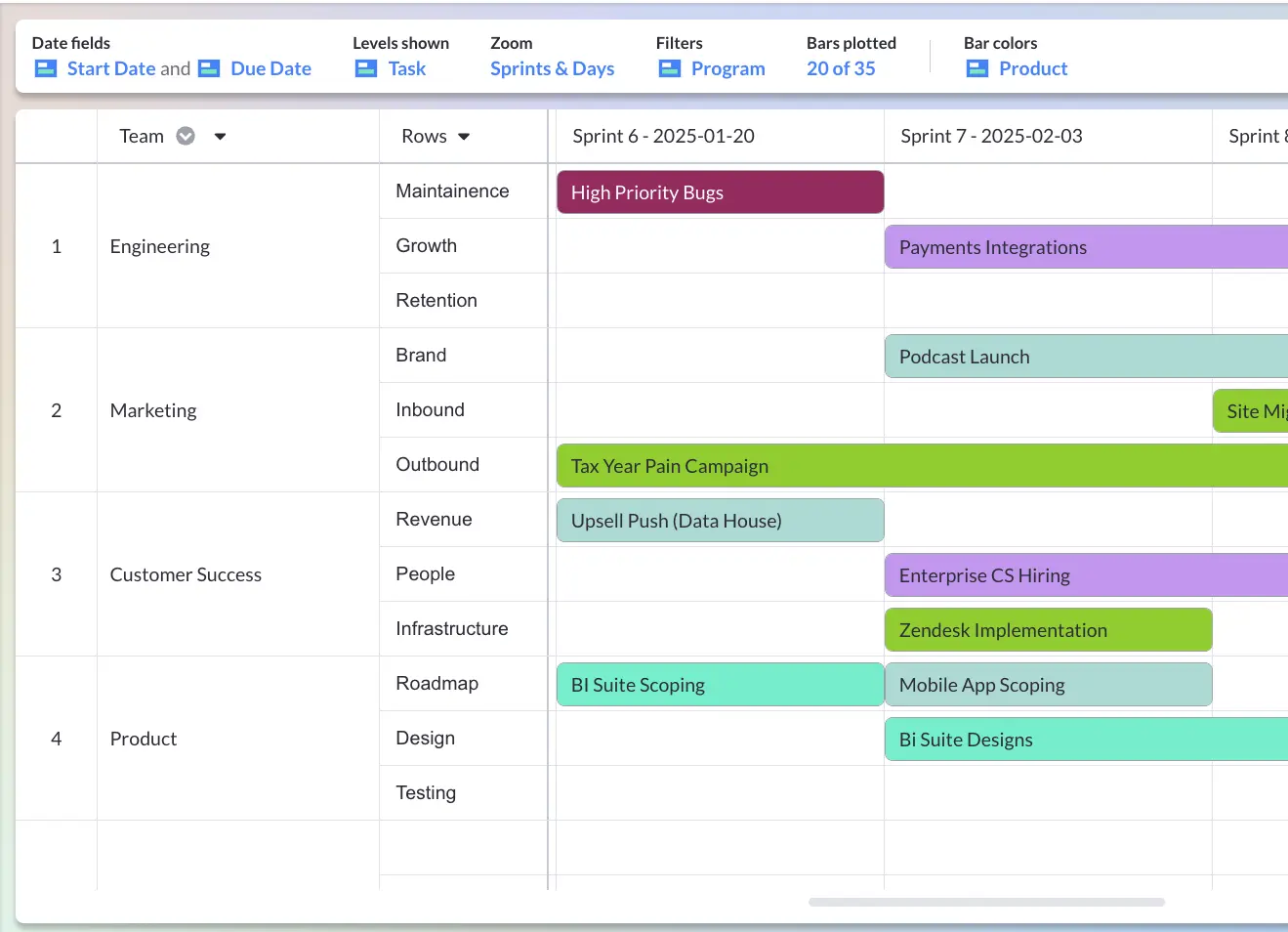
Visor’s Gantt Chart View
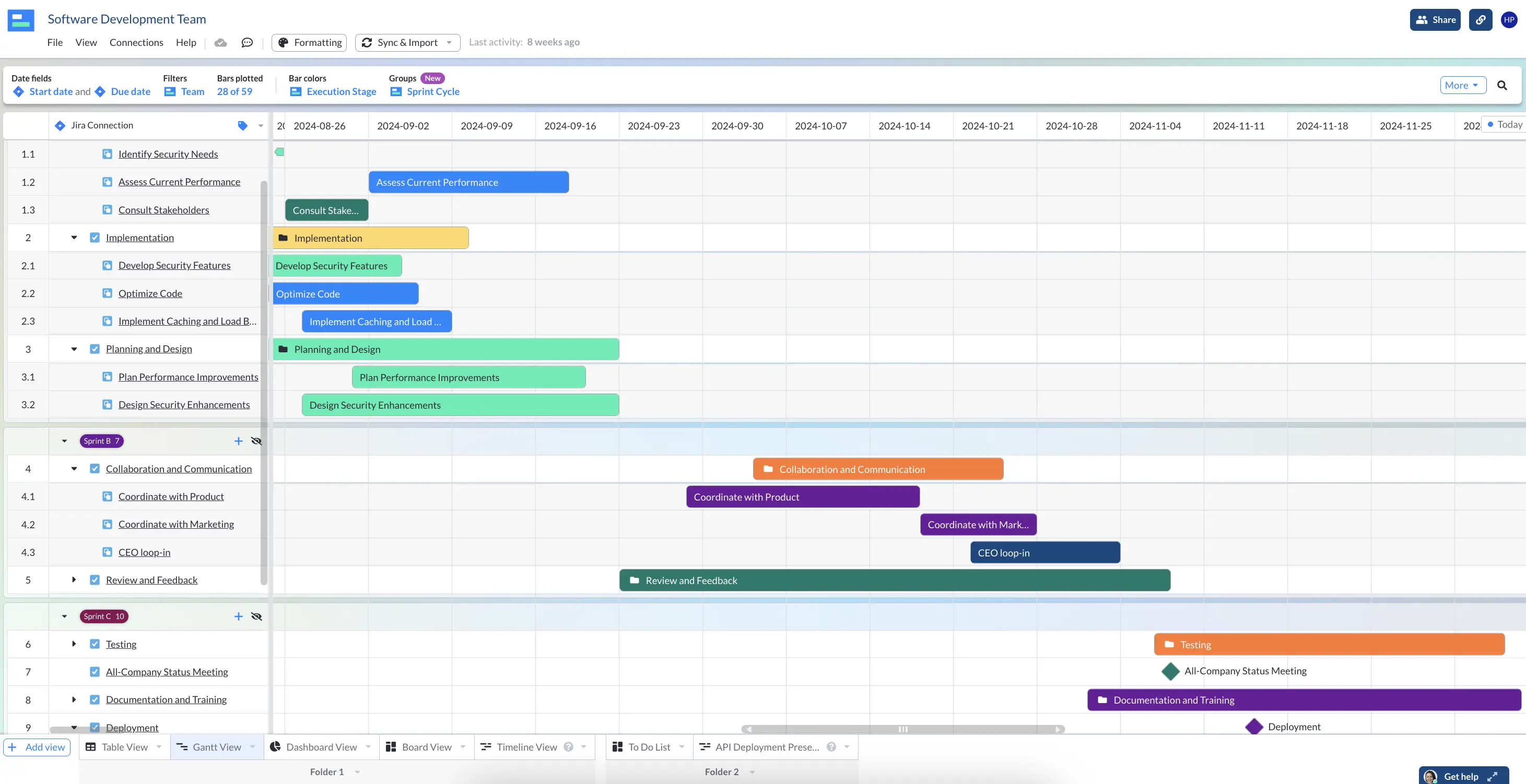
Task prioritization can do a lot to help in the next phase and these methods work best when your team understands how they work and can set them themselves.
That being said…
Prioritize ruthlessly
You don’t want to change up your goals halfway through your sprint. But you do need to be realistic and reasonable. If something is hopelessly blocked, make a note that it’s in a holding pattern and move on. It’s ok to let the little things go if they’re in the way of making bigger things happen.
You want to be done perfectly, but done is better than perfect.
How can you set better sprint goals?
There are a few templates to achieve better sprint goal setting. Selecting the right one is a balancing act of understanding enough about your team to make a good call.
The official Scrum template
What it is: A tried-and-true way to set variable but standardized goals
Who it works for:
- Teams that love classic Scrum and agile
- Straightforward tasks
- Tasks that tend to be similar or repeating sprint over sprint
In the news template
What it is: A fun goal setting template that imagines the success as a newspaper headline
Who it works for:
- Creative teams that enjoy a little fun in their work
- Demoralized teams needing a boost
- Teams that prefer to think of the big end results rather than the details of getting there
There are many variations on this method, including picturing the goal as a tweet or a resume line item.
FAB template
What it is: A straightforward method breaking down goals into features, advantages, and benefits
Who it works for:
- “In the middle” goals that need some context but not tons
- Busy stakeholders who need quick explanations
- Teams who’ve never set formal goals and need to ease in
Visor offers a ton of agile templates, such as product backlog templates and templates for agile roadmaps.
Roman Pichler’s template
What it is: An older but strong fan-favorite goal-setting template with plenty of room for detail
Who it works for:
- Anyone who needs to include context to their goals
- Teams who need to keep stakeholders or clients deeply informed
- Confusing, complicated goals that don’t fit in small boxes
Keep in mind that, even if you choose one of these methodologies, you don’t have to stick to it! One of the biggest advantages of using agile methodologies is that sprints are a time-boxed, controlled, replicable way to test different things and see what works best for your team. Take advantage of it by trying out multiple templates for setting your goals and inviting feedback from your team to see what works best for everyone.
Sprint Goal Setting Process Diagram
Here is a diagram that shows how you can implement a process to set, implement, review, and revise sprint goals:

Sprint Goal Template (Free)
You can use this free sprint goal template to create ironclad sprint goals. The template also includes guidance on how to set goals that will work well in practice.
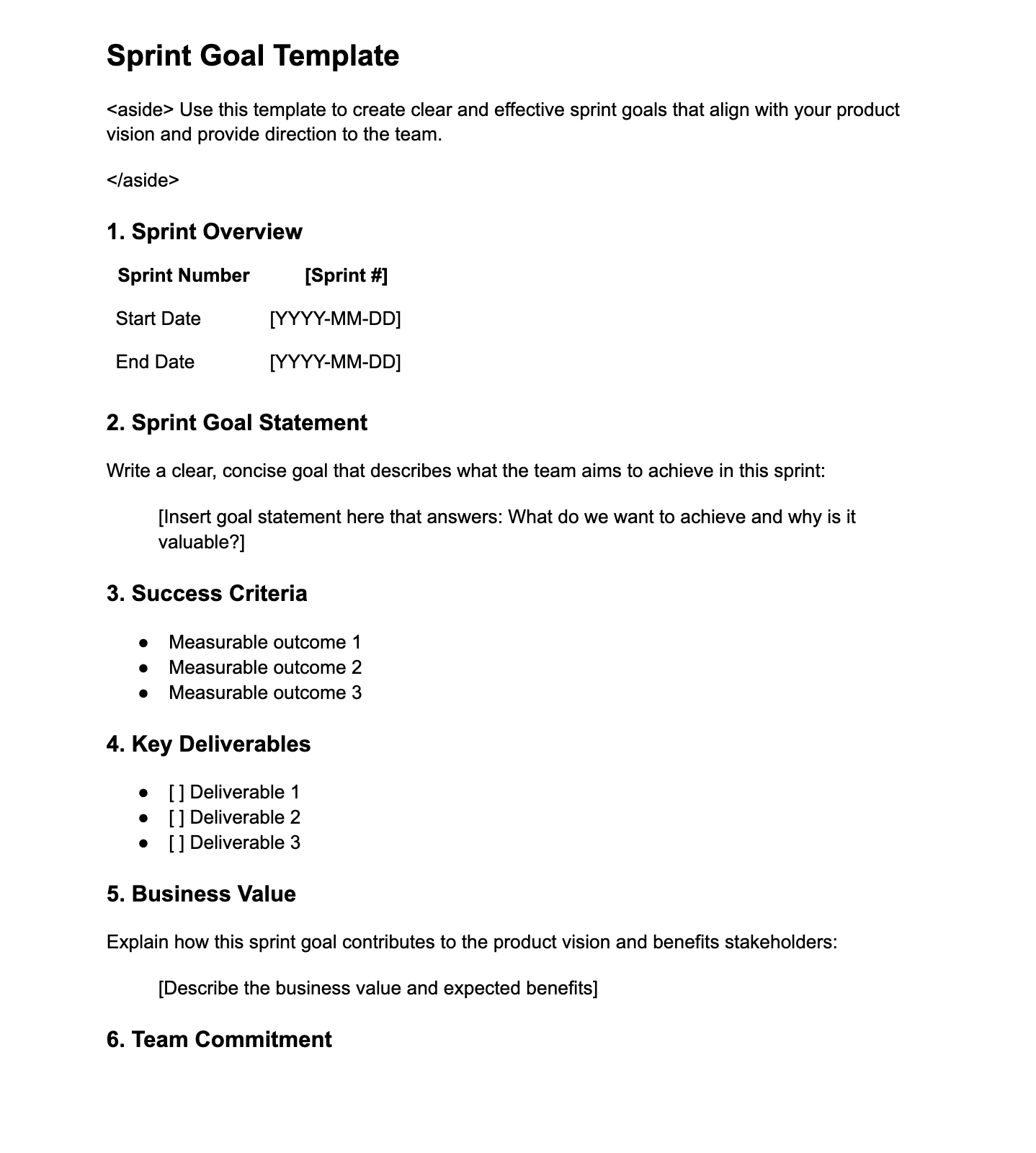
Sprinting to the Finish Line
Sprints can be an amazingly effective way for teams to get work done without feeling overwhelmed. But they don’t work without setting strong goals, and it’s critical that those goals be met in order to keep the team motivated and stakeholders happy.
These tips and methods will help you and your team think tactically about your sprints, and that can make all the difference.
If you’re looking for a great tool to help manage your team’s sprints, look no further than Visor. Visor is a project management tool that great PMs use to manage great teams. We integrate with the tools your teams are already using, helping you get all of your data in one place. Try it for free, and build a Dashboard that helps your whole team hit their goals every sprint.
Sprint Backlog Template in Visor:
